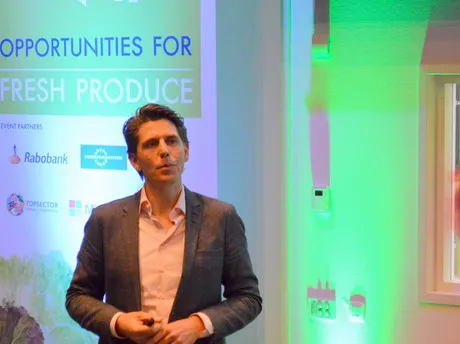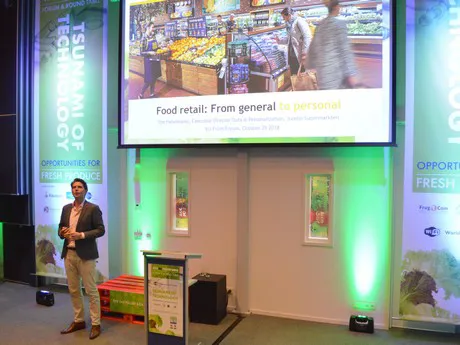The Dutch supermarket chain, Jumbo, has expanded rapidly in the last decade. This chain currently has a market share of about 20%. This increase is partly due to take-overs. However, even without the effect these acquisitions have had, this chain of supermarkets has grown.
Data is becoming increasingly important, even for supermarkets. But, how do you use it? Tim Hehenkamp, Jumbo's Director of Data & Personalisation, discussed the developments in the field. He did so at the recent EU Fresh Info Forum.

“Urbanization is continuing, also in the Netherlands,” Tim started by saying. “This changes consumers' demands." For the younger generation, personalization of products is the norm already. For example, the older generation has their doubts about facial recognition software. A study done among younger people has, however, revealed that they have far less trouble with this. Jumbo has to react to all these changes in the market. Besides a regular supermarket, there are formulas such as the Jumbo Foodmarkt and Jumbo City. They have also taken over La Place, and they are growing online.
Data determines the assortment
“Consumer demands are becoming increasingly specific. We have to convey this to our stores,” Tim explains the challenge. Information is the key to being able to meet these specific demands. Based on this, the assortment, online and offline, can be determined. “People will always be necessary because all data does is look back and predict expectations. People are needed to give these particulars."
How do you put this data to work? Firstly, the stores are divided into three categories: rural areas, urban areas, and city centers. Each of these sectors is divided into areas where price-conscious consumers live and areas where people have more money to spend. Based on this information, the assortments can then be adjusted to the consumers' preferences in a specific area. “If we do not have any data, we can do nothing,” continues Tim. “Eighty percent of the time is spent on creating or improving data.”
An example of this is that the number of SKUs has increased. For example, three different packaging formats for spinach are being produced. Consumers in the city centers want different quantities per packaging than those in rural areas. “The assortment has, therefore, expanded but the volume per item is smaller,” Tim explains.

More avocados solid in city centers
Another thing that can be gleaned from the data is the fact that more vegetables (cucumber, courgette, and avocado) are bought in city centers than in the rural areas. When further investigated, it becomes evident than the sales of, especially, avocados are significantly higher in the city centers than the rural areas. There, more cucumbers are sold. In this way, information can provide an overview of consumer demands in certain areas. The assortment is then adjusted using this information.
The figures also give insight into the interest in a product. Permanent customers, who do 90% of their weekly shopping at Jumbo, have different expectation to those who only visit these stores once in a while. On average, in seven of their ten visits, the first group buys bananas. For the irregular customer, this only occurs on about a quarter of their visits.
When it comes to Brussels Sprouts, this difference is even bigger. This vegetable is ten times are important for permanent customers as for those from the other group. "Where is this leading?" Tim ends his presentation with this: “We are busy with a pilot of personalized diets for sportspeople. In the future, this will become more common."
